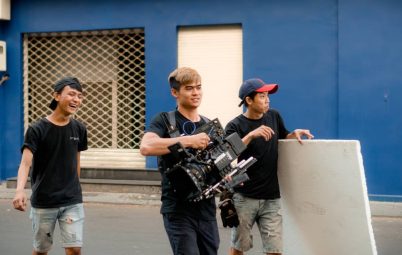The traditional lockdown viewing experience is one that most people will no longer engage in, but it’s certainly left a lasting impression on the way audiences digest and engage with content and it’s crucial that producers and brands alike adapt to this change. But how much have audiences changed since the early days of lockdown?
It’s never been more important for brands to be aware of their video audiences, and these audiences have totally transformed since the pandemic for a number of reasons which we’ll dive into through this blog. The way we consume media has changed. We’re no longer sitting down in front of the TV at 7:30 pm every night to watch The Simpsons. Instead, we have our smartphones in hand and are watching content wherever and whenever we want to. It’s important for businesses to keep this in mind when thinking about how they can use video on social media. If you create a Facebook video that is only a minute long, it might not be as informational as something longer form (i.e. an explainer video) but it’s certainly more engaging to the post lockdown audience. As recently as 2014, most people would sit and watch a video on their computer or mobile phone for an average of two minutes if it was interesting enough to hold their attention. Today, however, people are much more likely to be watching videos on social media platforms such as Facebook, Instagram or Twitter – a practice we grew accustomed to over the pandemic.
We don’t know about you, but there were a lot of days during lockdown where we were just trying to pass the time – constantly trying to find new ways to be engaged, and hoping for new distraction from the groundhog day we all were suffering with. This might sound very depressing, but actually out of it has come a fascinating switch up in video audiences, which gives way to a whole new way to engage them now that life is back to normal. It seems that, even after lockdown, we’re still all looking for a way to be entertained, and video is one of the easiest ways to do that. On Facebook, for example, people are spending more time watching videos than ever before – including live videos.
The first major difference between pre and post lockdown audiences is the increasing emphasis on short form content over long form content. ‘Credit’ here has to be given to TikTok which took off during Lockdown 1 and gave millions of people hours of endless entertainment with the very impressive (although sometimes scarily accurate) algorithm. From this, we now need to be aware that audiences expect an authentic touch to video content; content that feels like it’s speaking directly to them with genuine and authentic messaging. Connecting with your audience in this way is no longer as simple as believing your product speaks for itself, but rather how they can stand out from the crowd with a few examples being the talking plane from Ryan Air or the Duolingo mascot. It’s not just about creating a video that looks good and has content that is relevant to your audience, but also how you can make them feel. This could be through humour or shock value; it doesn’t matter what emotion you want to evoke as long as there is one. By using an in-house team of creatives who understand the audience and their needs, you can build a brand that audiences will connect with on an emotional level. By understanding the needs of your customers, you can create experiences which speak to them as people rather than just consumers.
During the course of the pandemic, there were 16 million new sign ups to Netflix. Audiences have become massively overstimulated during lockdown and are now looking for the next ‘new’ thing to keep them engaged. It’s important for brands to consider this when devising content, that it’s not always about what tells your story the best, but rather, how can we tell our story in a different way. In a world where content is king, it’s important for brands to consider what their story is and how they can tell it in a way that feels fresh and exciting.
One other thing to consider is how different age groups have almost aligned themselves with different social media platforms and therefore different age groups have become accustomed to different types of content. A recent study showed that 27+ year olds hold the biggest presence on Facebook, whereas GenZ dominates TikTok. Seeing as Facebook videos are usually longer form, it’s interesting to consider that these two age groups might need a different approach when trying to engage them. If you’re looking to get started with video, it’s important to remember that the landscape is constantly changing. The best way to stay ahead of the curve is by staying informed on the latest trends and updates. That way you can ensure your content is always relevant, engaging and most importantly— effective!
So what does all this mean for you? When it comes to your content strategy, you need to consider who you’re trying to reach, where they spend their time online, and what kind of content they prefer. The more specific your audience is the easier it will be for them to find your brand. Overall, we hope that as content creators, you will embrace this new way of watching and interacting with video content. Audiences are already on board, so don’t get left behind!



